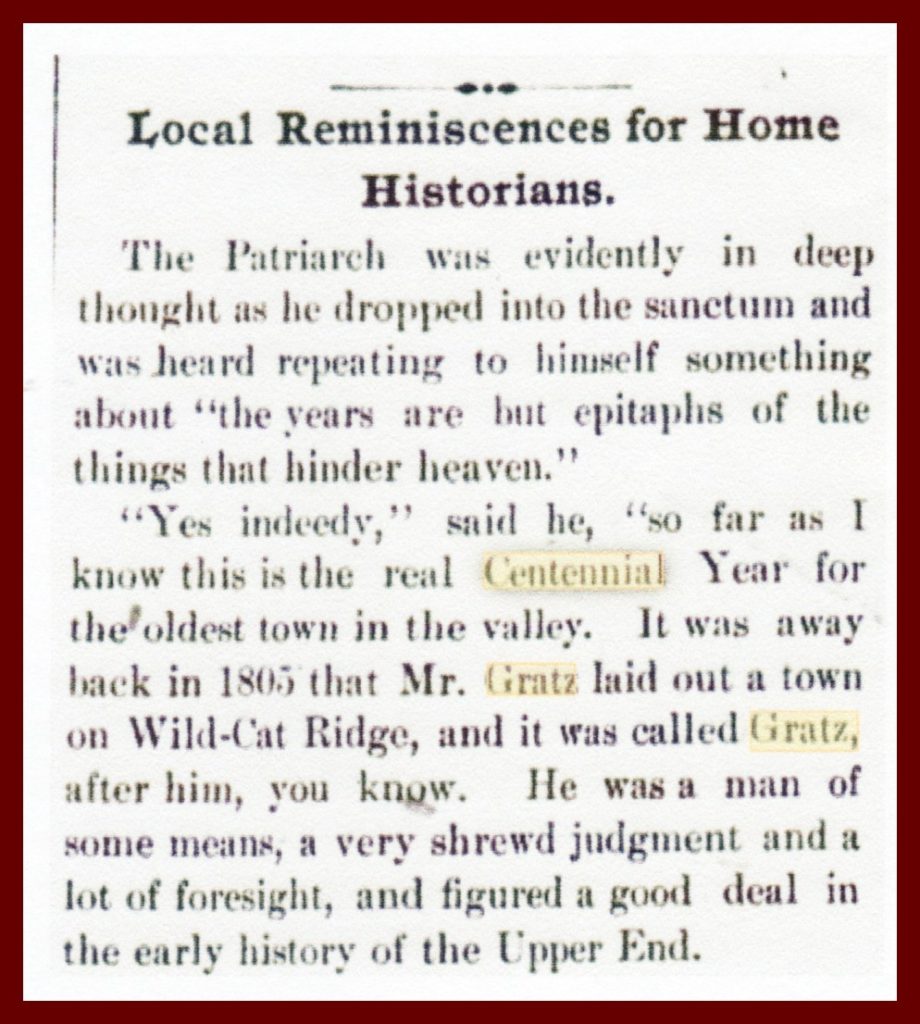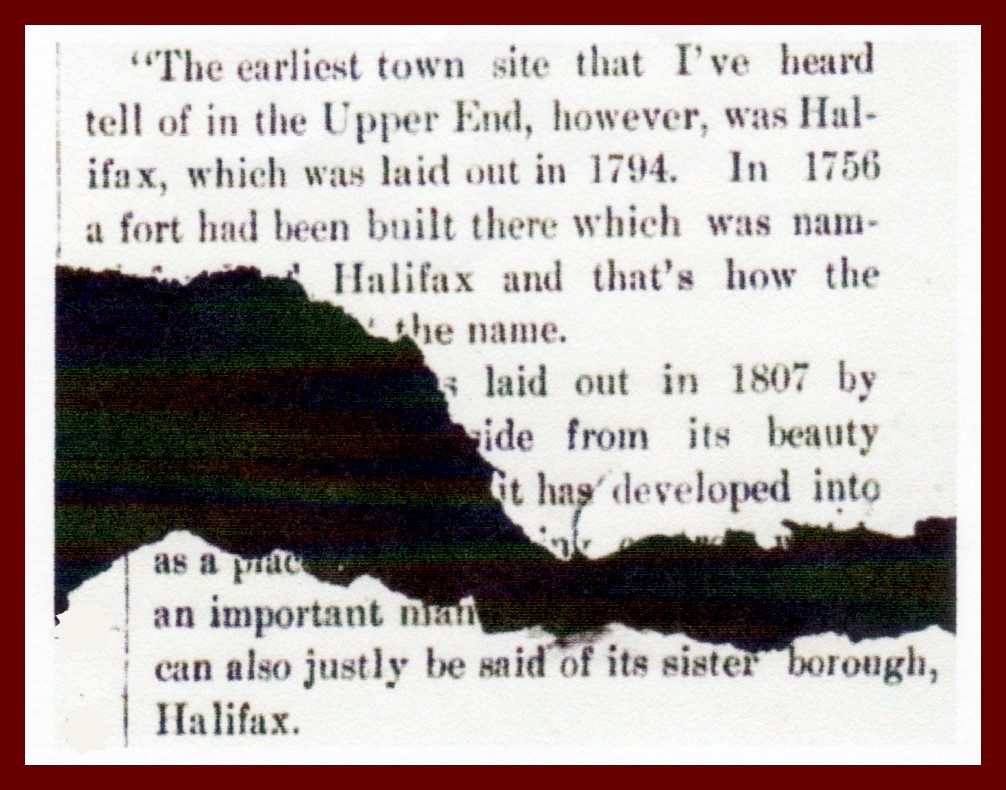Sixth in a series of nine 1904-1905 newspaper articles in which two old-timers are portrayed reminiscing about the Lykens Valley of the past. The two fictional characters, the “old railroader” and the “patriarch,” wander into the offices of the Elizabethville Echo, Elizabethville, Dauphin County, Pennsylvania at different times and tell a concise, folksy history of the valley.
_____________________________________
Local Reminiscences for Home Historians
The Patriarch was evidently in deep thought as he dropped into the sanctum and was heard repeating to himself something about “the years are but epitaphs of the things that hinder heaven.”
“Yes indeedy,” said he, “so far as I know this is the real Centennial Year for the oldest town in the valley. It was away back in 1805 that Mr. Gratz laid out a town on Wild-Cat Ridge, and it was called Gratz, after him, you know. He was a man of some means, a very shrewd judgment and a lot of foresight, and figured a good deal in the early history of the Upper End.
“Mr. Gratz lived in Philadelphia and many of his descendants still live there. He was in the mercantile business and by his interests in these parts, became one of the six organizers of the Wiconisco Coal Company in 1831. In the first dozen years after the town was mapped out only five houses were built. Preaching services were held regularly in privaqte houses up to 1832. In that year the Lutherans and Reformed put up a building jointly and called the church Simeon’s. Then by 1852 the town was made a borough. Gratz has had many distinctions. It used to be the centre of the old-time militia musters, and folks by thousands came there to see the exatseera.
“Yes indeedy, and Gratz had been the only Upper End town equal to the task of keeping alive a country fair and to make it one of its successful institutions. It has a good location, is laid out with some regard for right angles and its streets are inviting to travel. From a meagre settlement, the town has grown in line with the progress of other communities permanent advancement for the future.
Note: The next two paragraphs contain gaps in text due to a missing piece in the story due to fold damage of the original newspaper.
“The earliest town site that I’ve heard tell of in the Upper End, however, was Halifax, which was laid out in 1794. In 1756, a fort had been built there which was named… Halifax and that’s how the … the name.
[Millersburg]… laid out in 1807 by… from its beauty… it has developed into… as a place… an important… can also be said of its sister borough, Halifax.
“In fact, this end of the county forges ahead and gets there with the rest of e’m. There’s a lot of pleasant places that don’t get in the paper as much as New York and Philadelphia, but that’s only because they don’t disgrace themselves like the big cities.
“Across the mountain here we have Dietrich, and what used to be called Centre View, with as goodly a class of people as ever was known. And Jacksonville, laid out in 1825 by George Enders and Joseph Lyter. They called it that in honor of President Jackson, but when they got a post-office in 1854, it was named Enders in honor of the first postmaster, William Enders, who also kept the first store there. Joseph Bowman built the first house in the town, and all the traveling men go there, and why? – because they know there’s business there.”
Having business down street, the Patriarch abruptly departed assuring us of a call next week.
___________________________________
From the Elizabethville Echo, 26 January 1905.
Corrections and additional information should be added as comments to this post.

